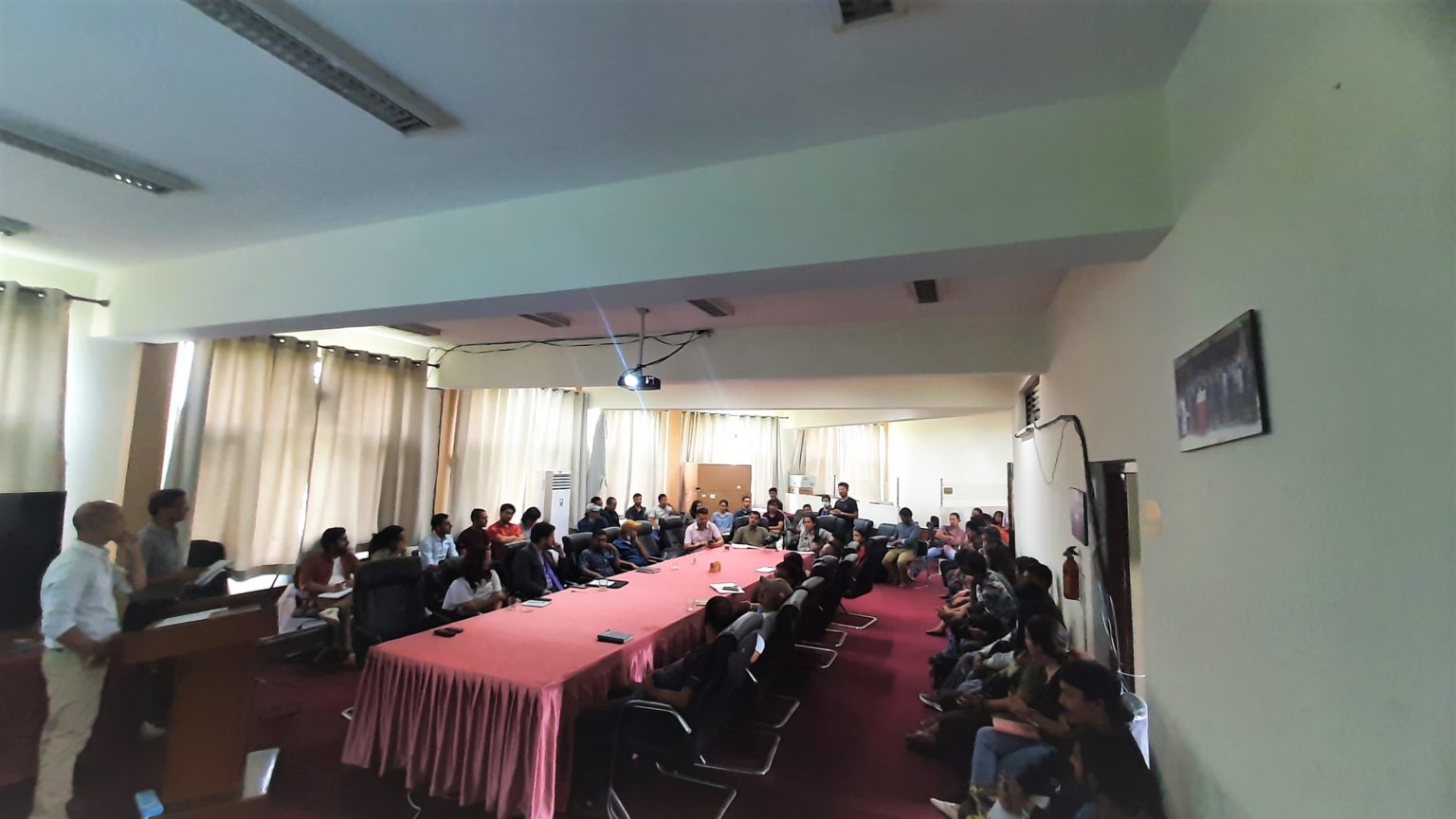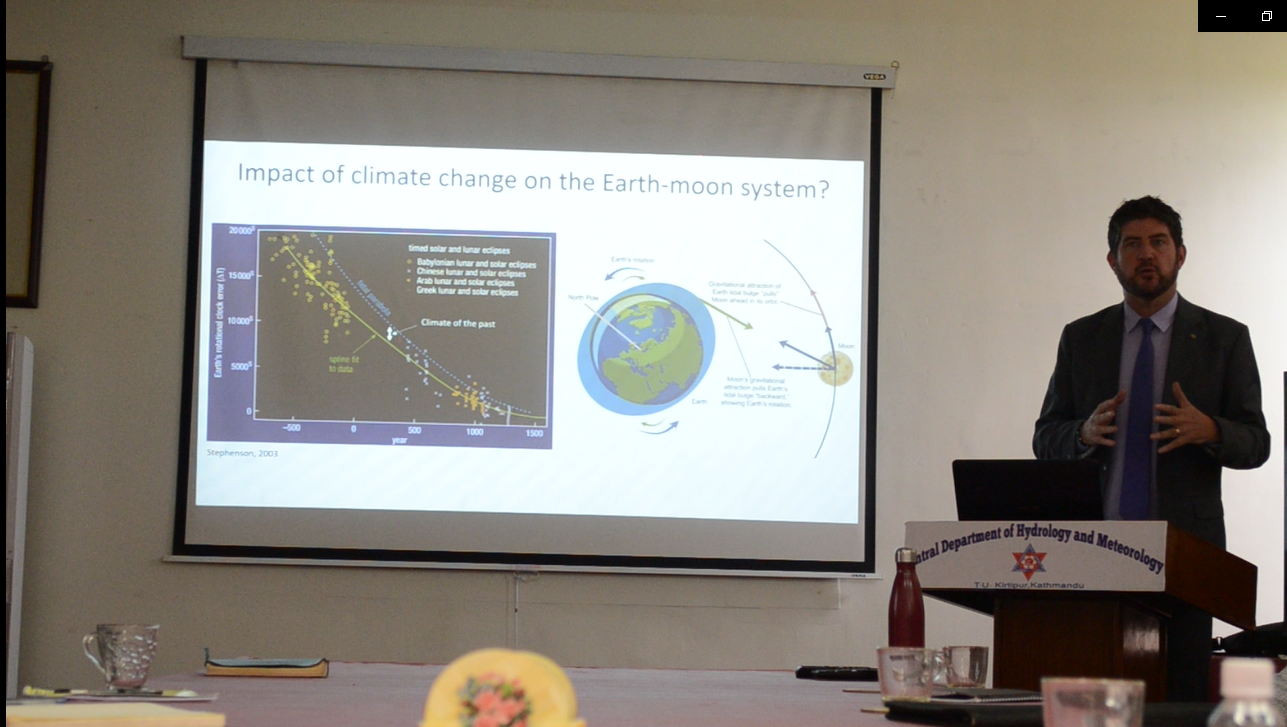On 14 July 2020, The Small Earth Nepal (SEN) in collaboration with the Central Department of Hydrology and Meteorology (CDHM), Tribhuvan University (TU), NASA Jet Propulsion Laboratory (JPL), and United Nations Educational, Scientific and Cultural Organization (UNESCO) Kathmandu organized CDHM Talk Program Series 14 “From the Beauty of Snowflakes to the Mystery of Wobbly Earth: Joy of science exploration at NASA” by Dr. Surendra Adhikari (Glaciologists and Geodesist at JPL) at CDHM Kirtipur, Kathmandu.
The program was attended by 57 participants, mostly graduate, and undergraduate students. The program was chaired by Dr. Dipak Aryal (Professor and Head, CDHM). The opening remark was done by Dr. Dibas Shrestha (Asst. Prof., CDHM) followed by a brief introduction about the talk program and the presenter, Dr. Surendra Adhikari, by Dr. Dhiraj Pradhananga (President, SEN, and Assoc. Prof., TU). Dr. Adhikari gave his short introduction and shared his fascination towards ice and geoscience from an early age. Dr. Adhikari presented his study on Greenland ice mass change from 2002-2020 using GRACE and GRACE-FO satellites. A few of his current studies include bedrock GPS for continuous measurement of glacial discharge and sea-level fingerprint mapping to predict the effects of glacial mass loss on self-gravitating rotating deforming planets. These studies mainly focused on the earth’s spin axis shift/earth wobble due to glacial melt and polar ice mass change due to climate change. Dr. Adhikari expressed an innovative idea to study the impacts of climate change on the Earth-Moon system.
After a brief discussion, Mr. Michael Croft (UNESCO) provided closing remarks. As UNESCO is the specialized UN agency with a mandate for science, he discussed how the Organization seeks to advance and promote scientific research and activity in the interests of peace, sustainable development, and human security. For UNESCO, he stated, in an era of rapid social transformation, digitalization, pandemic, and climate change, it is imperative to build a culture of Open Science – to cultivate much closer links between scientists and society, especially youth.





